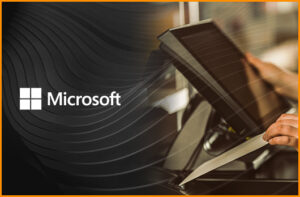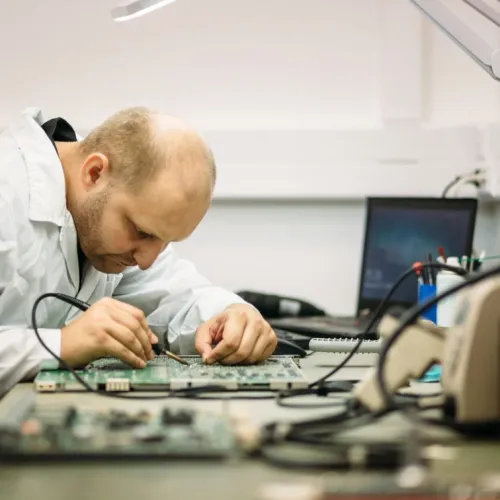At the heart of all the IoT solutions Bsquare helps customers build is the operating system (OS). It’s what makes every intelligent device tick, whether that involves data processing or connecting to the cloud. Some manufacturers come to us with a specific operating system in mind; others look to our consultants and engineers for guidance.
Whether you’re selecting the operating system for your IoT project yourself or want to tap into our 25 years’ experience with different embedded operating systems, it’s absolutely vital to take five key elements into account when you’re developing an intelligent device or system:
- Embedded OS features
- Embedded OS performance
- IoT security
- Ability to scale
- OS support lifecycle
1. How well does the OS match the needs of the project?
It might seem an obvious thing to say, but there is no one-size-fits-all approach when it comes to choosing an OS for a purpose-built device. It must support all the necessary hardware, application, and connectivity requirements of the product, now and in the future.
Different embedded OSes have different features and benefits, some of which may be more relevant to the needs of a specific project than another. Understanding these differences and not just choosing the OS that is most familiar is where Bsquare can add significant value to a project. Making the right choice at the outset of a project saves time and money later on.
2. What kind of performance is required from the OS?
Processing power and real-time performance of the embedded OS need to match the anticipated needs of the intelligent device project. A properly modelled IoT solution will have clear, prioritized targets for performance factors such as latency, power consumption, compute power, processing speed, and memory. These must all be considered when choosing the OS to use: a device that needs to process millisecond responses will use a different OS to one embedded in a ticket machine, for example.
For small devices with limited storage space, where real-time processing is required, real-time OSes like Azure RTOS, combined with other Azure platforms and devices, are perfect. When price is a consideration, the compact footprint of embedded Linux OS allows support for constrained systems with minimal storage, process, and memory.
3. What level of security do the IoT devices need?
Security must be built into the design of every IoT solution, and the operating system is a fundamental part of this. Yet again, different OSes offer different security features (and levels within those features), so it’s important when choosing the OS to consider aspects such as multi-layer defense, renewable security, encryption and certification, and compartmentalization. The importance and strength of these features must then be looked at in the context of the sensitivity of data being handled and the industry or application in which the devices are being used. As Stacey Higginbotham notes, IoT security is a business decision from the beginning.
4. How well can the OS scale to meet the future needs of the project?
If the IoT project parameters are likely to change over time, or the scale of the solution needs to grow, then it’s important that the OS can scale with those changes. This is vital to avoid having to accommodate a different system when you realize that the OS you originally selected simply can’t cut it.
A scalable OS should be able to handle additional resources without major changes, and without affecting performance. OSes like Windows 10 IoT Enterprise, for example, can support the continuous development of new applications, services, and features, without large investments or disruptions to operations.
5. How long is the support lifecycle?
IoT technology is constantly evolving. So like any other OS, an embedded operating system needs to be kept up to date. The last thing you want is the OS you choose to become obsolete a year or two after deployment. Our consultants ensure that the support lifecycle fits the needs of the solution. We work with partners like Microsoft who offer both long-term 10-year support cycles (LTSC), with optional releases every 2-3 years, as well as shorter-term 18-month support cycles (SAC), with twice-yearly releases.
Relevance, performance, security, and scalability are all central to the choice of operating system in a purpose-built device project. These are just some of the questions our consultants and engineers consider as we help manufacturers build solutions that meet the needs of their customers now and in the future.
For more than 25 years, we have helped companies embed Microsoft Windows IoT and embedded operating systems in their smart devices. Today we support all Windows IoT and embedded OS products as well as Linux, Android, FreeRTOS, QNX, and ThreadX.
Find out more about our Embedded OS Software and Services or contact us today to learn more about choosing the right OS for your purpose-built device or intelligent system.



